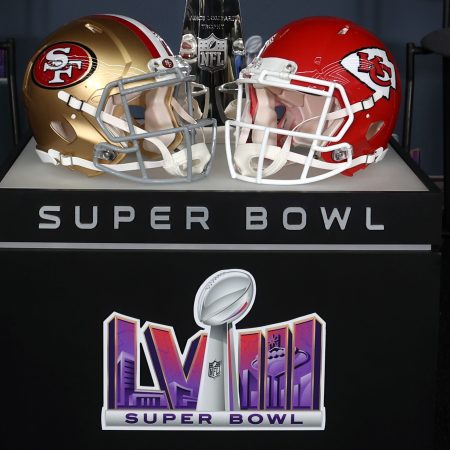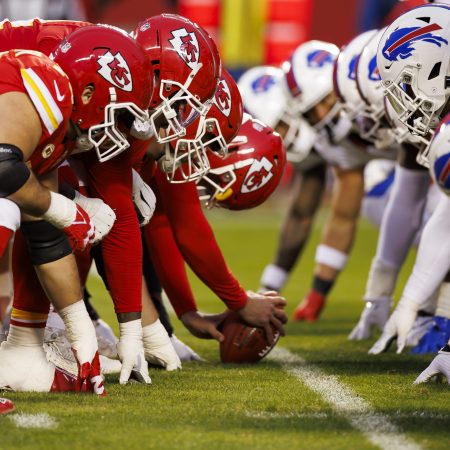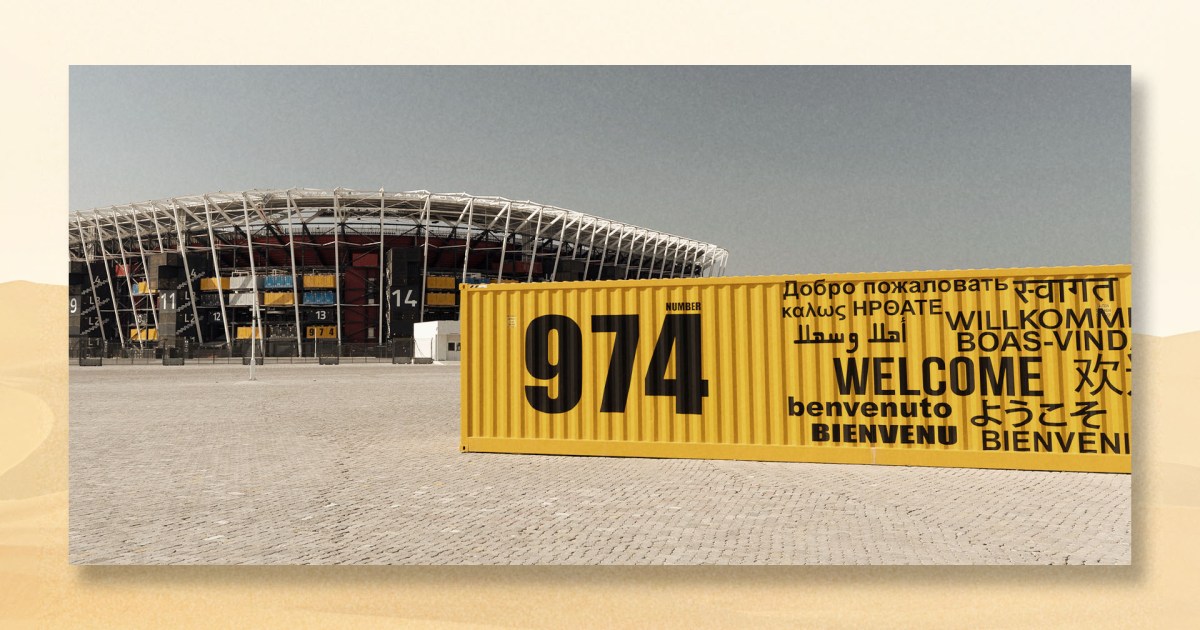
It was early morning but already hot as hell as seven Toyota Land Cruisers careened through a Mideast desert. Our driver, dressed in a traditional white flowing thube, pointed to a pine-scented “no smoking” sign dangling from his rearview mirror and smiled, promptly offering me a cigarette.
It was late March and a bit disorienting how quickly the towering glass skyscrapers of Qatar’s capital city of Doha gave way to white-walled suburbs and then to oil refineries before opening up into a sprawling desert. The sun was so strong — the sand so endless — I half expected one of those giant worms from Dune to emerge from the ground and swallow us whole. The itinerary called for “dune bashing.” I had no idea what that meant. But pretty soon our SUV was perched perilously on a sandy cliff, tipped nose-first on the edge, before sliding forward in a near-vertical decline — like a rollercoaster without a track. Or, for that matter, working safety belts.
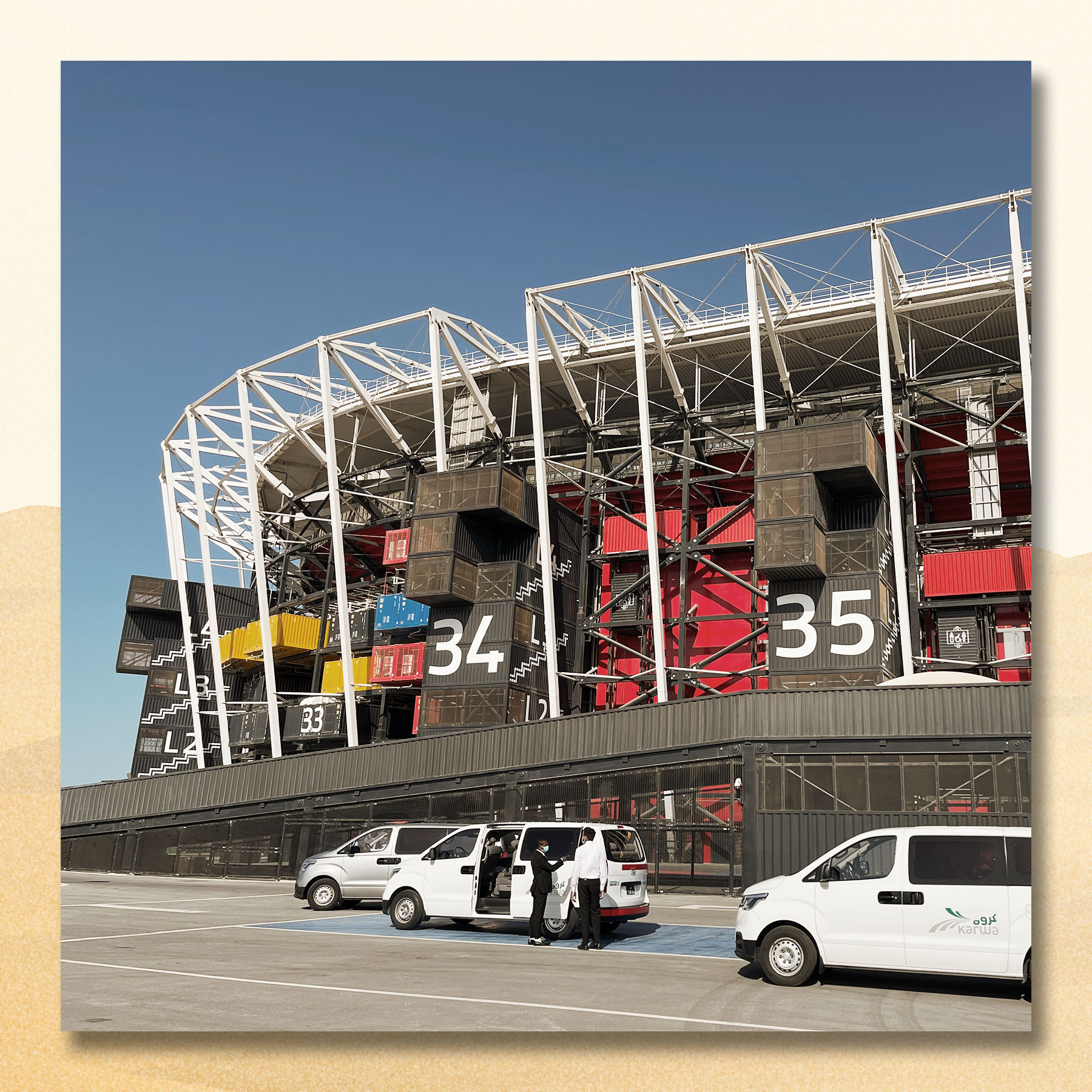
That’s kind of what Qatar feels like: a curious, up-is-down destination that seemed to have appeared out of nowhere like a mirage but quickly announced its intentions. The message? Underestimate us at your own peril. I’d come to Doha to tour the 2022 World Cup sites; Qatar will host FIFa’s crown jewel this fall, the first-ever World Cup to be held in an Arab country. Seven state-of-the-art stadiums — from brand-name architects like Zaha Hadid and the British firm Foster + Partners—were constructed for the event, and the month-long celebration is expected to draw more than one million tourists, conferring serious bragging rights on a country the size of Connecticut determined to punch above its weight.
Hosting the World Cup is estimated to cost Qatar north of $200 billion dollars. And while that’s a staggering sum, this is not so much an economic bet as it is a coming out party — an “Open for Business” sign writ seriously large. As Berthold Trenkel, the head of Qatar Tourism, told me over breakfast on the 27th floor of a shiny new hotel downtown: “When you read up on stories of how much countries have invested versus how much they got out of it, I haven’t heard of anyone who made money. But I’m getting 1.5 million influencers [to visit]. How do I use the 28 days of the tournament like a springboard?” If you build it, they will come.
I should say this up front: my knowledge of soccer is limited to elementary school gym class (I was terrible), hours spent Googling Cristiano Ronaldo’s Calvin Klein ads (which explains why I was terrible), and two seasons of Ted Lasso. I cannot tell a red card from a vaccine card. But after four strange days in Doha — and one Idris Elba sighting — I would realize what must have been obvious to others but was somehow new to me: pro soccer is a soap opera dressed up in short shorts, a sweaty telenovela full of personal grudges and scandals. I just needed a Greek chorus of British tabloid journalists — call them the Three Junketeers — to translate.
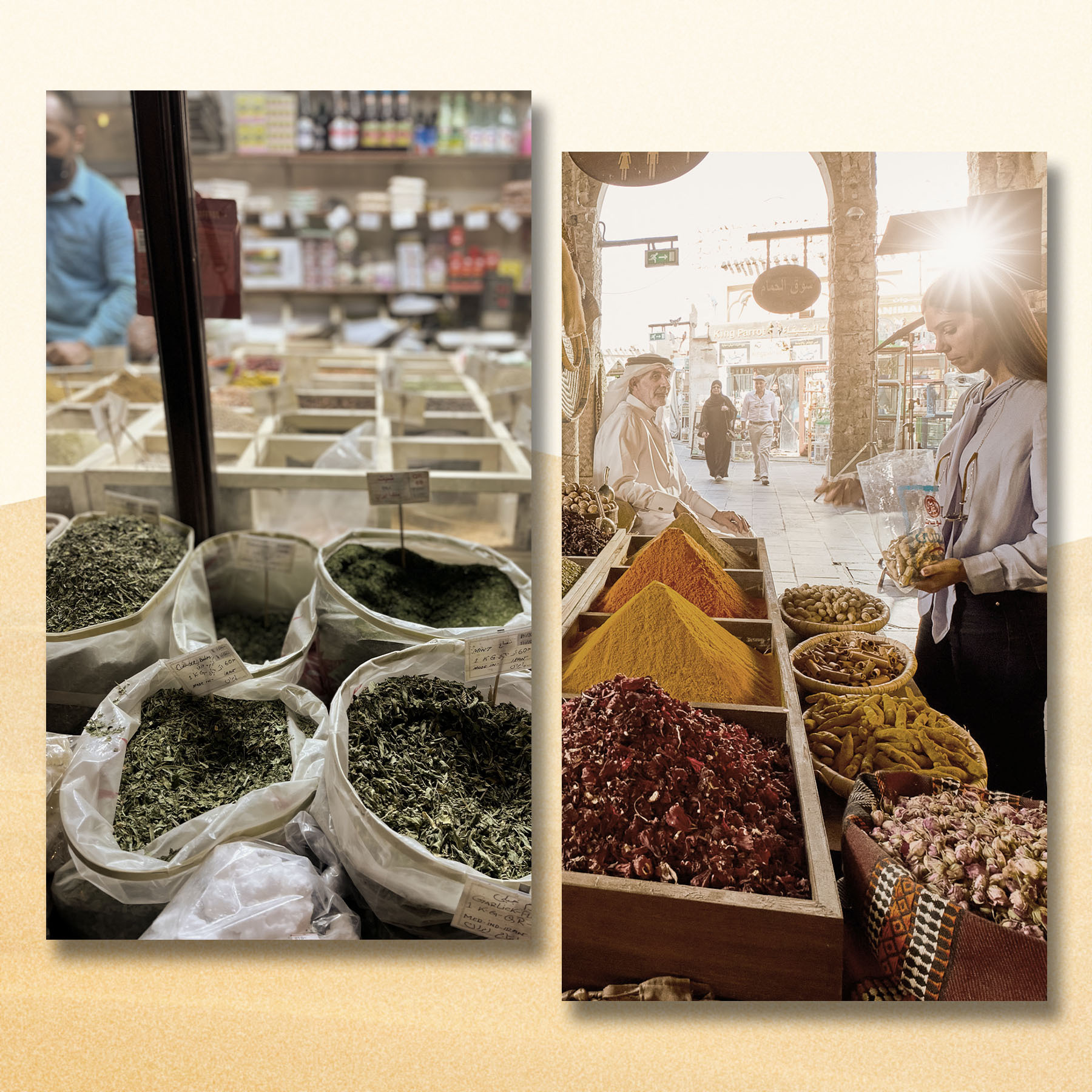
The first stop on our stadium tour was an open-air marvel on the Doha waterfront billed as the first professional stadium built from shipping containers; the structure was designed to be dismantled at the end of the World Cup and reassembled in developing nations as several smaller stadiums. The whole thing was like some grown-up LEGO set and that’s what it looked like; picture green, yellow and red shipping containers fabricated in China and delivered plug-and-play. Even the luxury boxes were retrofitted shipping containers, the corrugated steel as feature not a bug.
The arena was initially named Ras Abu Aboud Stadium which, if you say it quickly, sounded a lot like the villain from Christopher Nolan’s first Batman film, Ra’s al Ghul. But the joint was later re-named the “974 Stadium” for two fitting reasons: Qatar’s international dialing code is 974. That’s also the number of shipping containers used in its construction.
Mohamed Al Atwaan, the site’s project manager, proudly toured some 20 of us international journalists through the locker rooms and out onto the field. Of the innovative proposal, he explained, with a whiff of Riz Ahmed’s swagger: “Everyone said, ‘Never been done’.” The plans needed to meet FIFA requirements and also, ya know, actually come apart as imagined. “Everything that happens for the first time,” he said, “you will have resistance.”
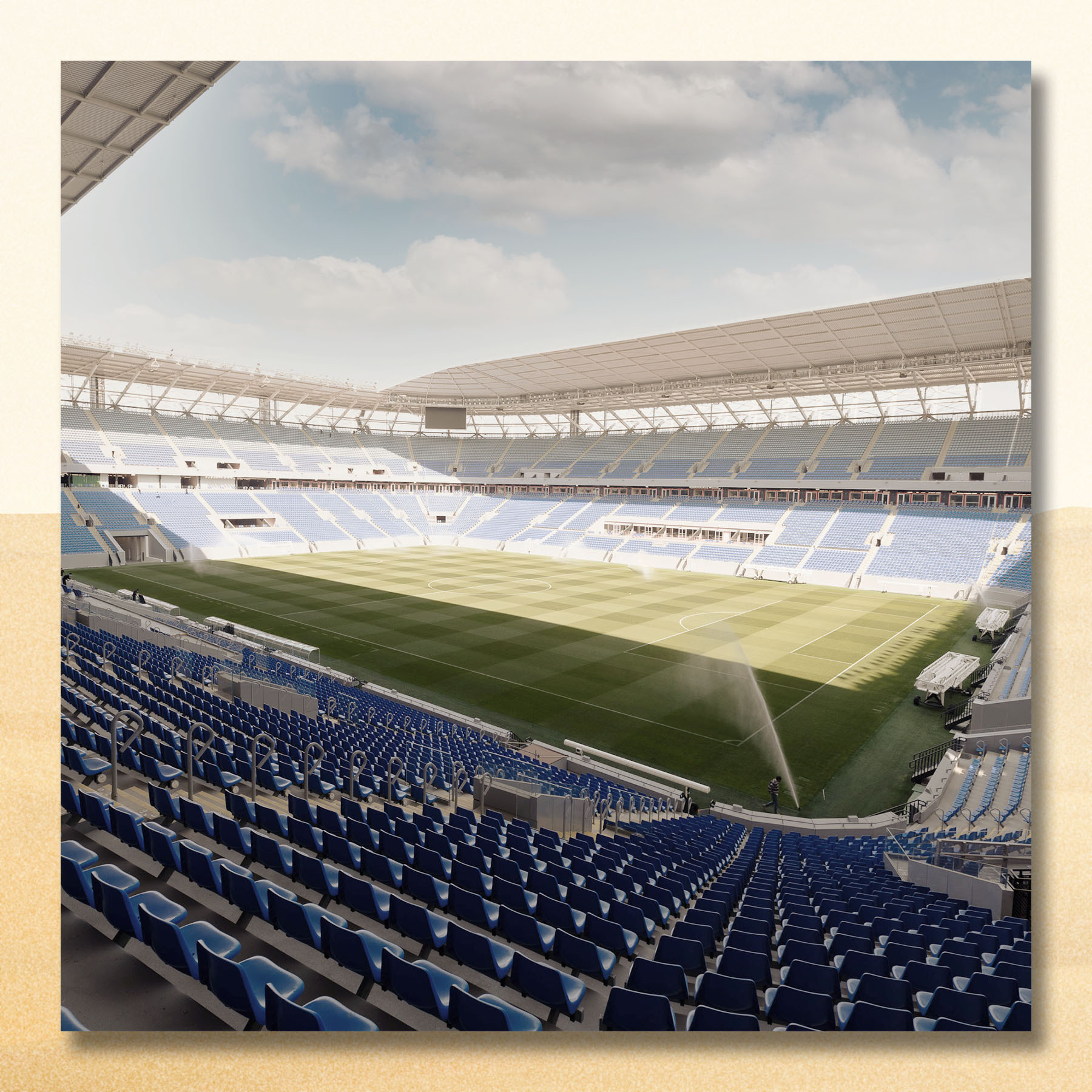
As we sniffed the fresh grass — more on that soon — Al Atwaan told me he was rooting for the Qatari team, who would be making their World Cup debut this year. While he acknowledged the home team only qualified because Qatar was hosting the tournament, he hoped they would stun the world. “You never know,” he said with a smile. “It’s happened before.” And he was right. A UK journalist later confirmed that point, telling me the Qatari team is actually playing better than the Russians did when they hosted the 2018 World Cup. Still, hosting a party to make sure you’re invited? What is this, my bar mitzvah?
The thing is: Qatar didn’t just want to host the World Cup. They wanted to host everything. In the 90s, fueled by seemingly endless reserves of oil and gas cash, then-emir Hamad bin Khalifa al-Thani began luring major sporting events and diplomatic meetings to Qatar, including the 2006 Asian Games, the 2012 UN Climate Change Conference, and the 2022 FIFA World Cup. His daughter, Sheikha al-Mayassa Hamad bin Khalifa al-Thani, enticed western universities like Georgetown, Cornell, and Texas A&M to open branches in a new Doha neighborhood, Education City, alongside the stunning Qatar National Library designed by Dutch master Rem Koolhaas.
The country’s current leader, the emir Sheikh Tamim bin Hamad al-Thani, continued the plan, signing a 10-year deal with Formula One to host the Qatar Grand Prix (which begins in 2023). And while Qatar was unsuccessful in landing both the 2020 Olympic Games and the 2032 games, they are surely not giving up. How else to explain the sudden appearance of a spiraling, 200,000 square-foot museum in Doha dedicated to the Olympics? The 3-2-1 Qatar Olympic and Sports Museum opened in April with 23 original torches on display alongside the famous Jamaican bobsled from the ‘88 Olympics in Calgary. (While the museum’s installations could be hit-or-miss, the basement felt essential: an interactive neo Dave & Buster’s where I tried—and failed—to score a penalty kick off a robot soccer keeper.)
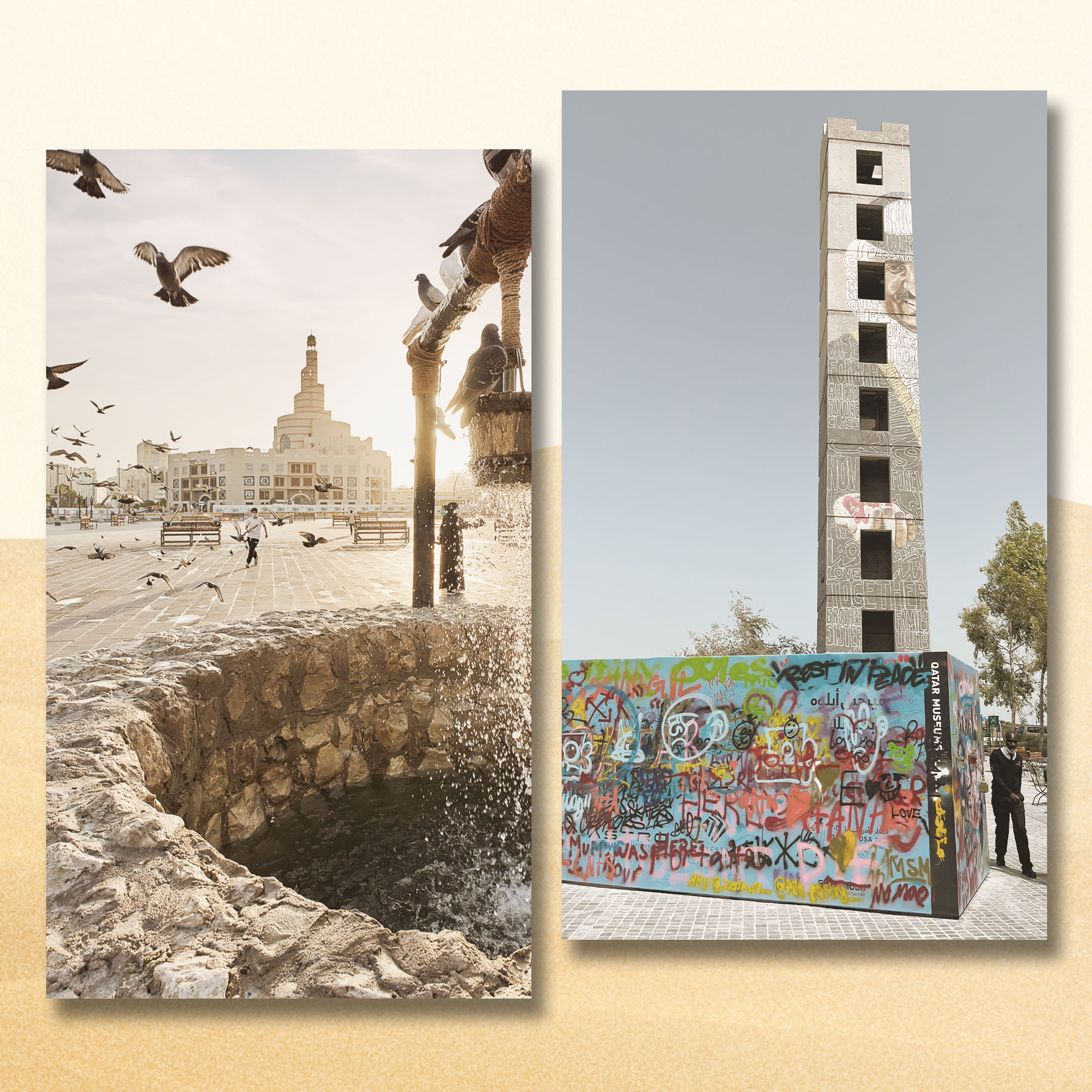
How Qatar bagged the World Cup was its own controversy, with critics accusing the government of buying the games with a series of well-placed bribes. Who knows what really happened but FIFA is famously ripe with corruption. (More troubling was a 2021 report in The Guardian claiming thousands of migrant workers died readying Doha for the games, claims refuted by the local administration.) But Qatar wants what it wants, which apparently extends to outdoor air conditioning. The chic French department store Galeries Lafayette recently opened in Doha’s Katara Cultural Village on a café-strewn promenade that — with apologies to Mother Nature — is climate-controlled through vents in the pavement.
Hosting the World Cup in the Middle East would present its own challenges; the tournament was forced to shift from its traditional summer perch to the fall to avoid the blistering heat. Temperatures could still reach 100 degrees Fahrenheit when the games begin in November. And so the stadiums were designed to keep the pitch at a steady 70 degrees. In the event that a heatwave ruins the turf, fear not: a back-up reserve of fresh grass — the size of some 40 soccer fields — is being grown at a farm north of Doha.
But there were upsides to these changes, too. A new subway system designed to swiftly whisk visitors to matches while relieving some of Doha’s infuriating road traffic opened in 2019. And by hosting the World Cup in one city — instead of a sprawling country — it will be possible for fans to experience three matches live in a single day. Provided you’re lucky enough to score tickets.

Locals had the chance to enter a lottery for discounted tickets. But even the head of tourism told me he spent hours online trying to secure tickets. “Everyone thinks I get everything for free,” he said. He tried his hand at the lottery but, “first round,” he added, “I got nothing.” When tickets became available again, Trenkel told me, he carried his laptop from meeting-to-meeting, eventually completing the transaction — with a Visa card, naturally. Visa is a World Cup sponsor. So, leave your Amex at home.
But my cab driver wasn’t as lucky. “I applied for all matches,” he told me, “but I only got one.” One of his friends, however, applied for all matches and got every single one. Which sounded great except homeboy now had to come up with the cash. To curb potential black market sales, the full ticket package — which would cost him 6000 riyals, or $1600 dollars — was non-transferrable. “He has only two options,” the driver explained: “Pay it or lose it.”
After lunch at a Turkish restaurant in town, we visited two other stadiums — including Education City Stadium, nicknamed the “Diamond in the Desert” thanks to its brilliant cladding — and these UK road warriors filled me in on some of the storylines that might unfold at the World Cup. The Spanish team was playing well, they said, but its players were maybe too old to win. The Portuguese team, on the other hand, was perhaps too young. Then there was the UK coach, Gareth Southgate — perfect name, no notes — a one-time player who’d famously missed a penalty kick at the 1996 Euro semi-final against Germany and never lived it down. He would later have to appear in a Pizza Hut commercial mocking his mistake just to prove he was in on the joke. Would he lead the UK team to victory in Doha and finally redeem himself on the world stage? (Rumor has it he’s taking this very seriously, having his UK team hole up in a single hotel on the outskirts of town to keep them from distractions.)
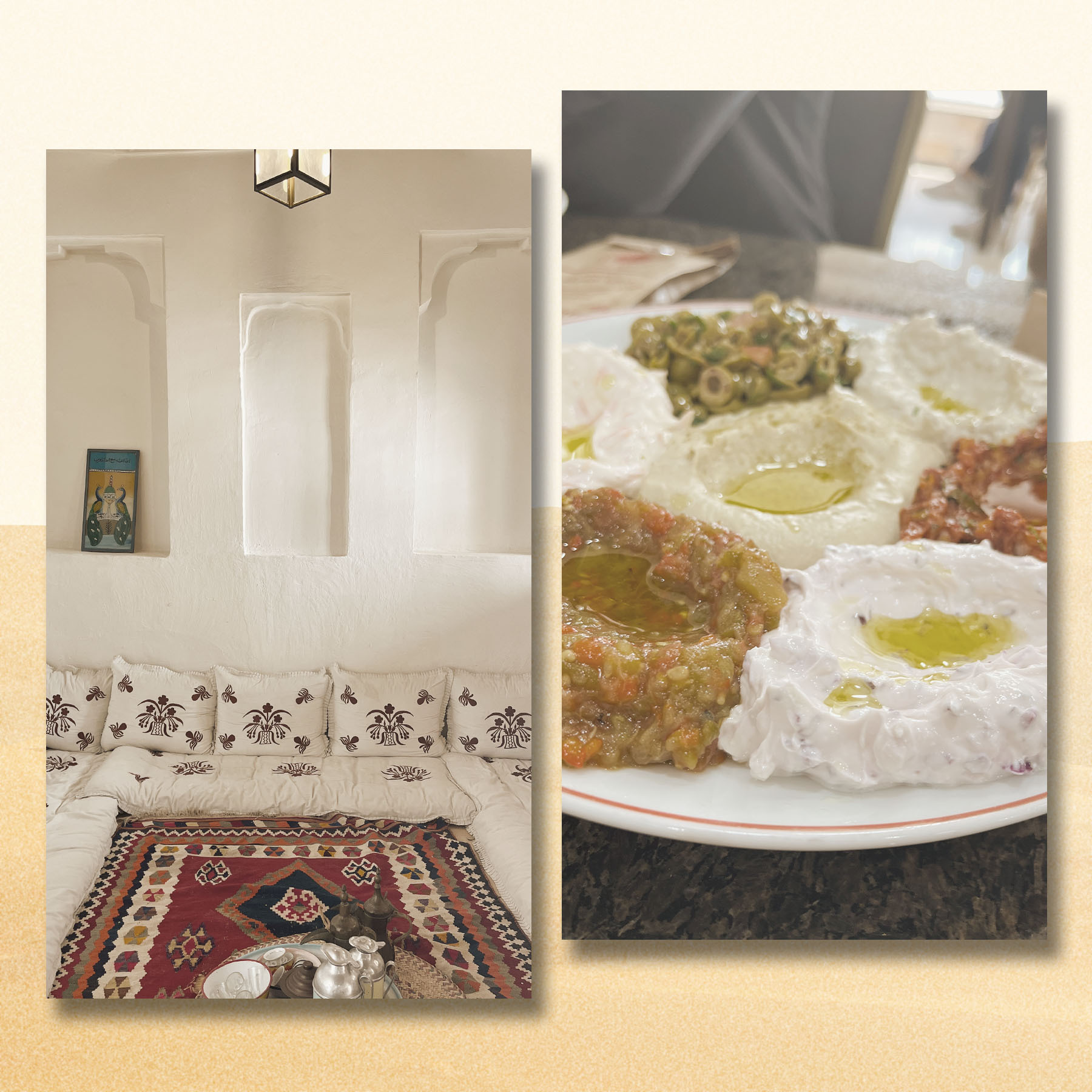
This was the kind of drama I could get excited about. And man did Qatar love drama. How else to explain why the World Cup final was scheduled for Qatar’s National Day, December 18th. It was like scheduling the Super Bowl on July 4th. I still had no idea how a country of 2.8 million people could possibly absorb 1.2 million visitors over the course of a month. But maybe that’s also part of the fun. Call it controlled chaos. Cash me outside a designated Fan Zone (one of the only places to legally consume alcohol).
My week in Doha was timed to the World Cup Draw, an event that I can now report looks a lot like a lottery drawing on local news; picture pretty people smiling awkwardly on camera as they pull white balls out of glass bowls. This elaborate, televised pageant—formally establishing which teams would face each other in the early rounds — was hosted, believe it or not, by Idris Elba, who looked predictably badass in all black. The event was held at a convention center in Doha’s financial district but we watched it like real fans, settling into a Belgian-themed pub at the Intercontinental Hotel. Management set up a massive outdoor viewing party for the night and we sipped mocktails while staring up at a giant projection screen.
There was a couple of hundred people at the pub and it was a pretty bizarre scene. Made even more so by the fact that, when the lights came up at the end of the night, the entire place would be boarded up for the month of Ramadan. But for now, anyway, the joint was hopping. The British comedian Jack Whitehall was seated a few tables over from us with his pal (and one-time UK midfielder) Jamie Redknapp; the two were producing a soccer travelogue for UK’s SkyTV, and they graciously posed for selfies with expats all night.
I didn’t understand exactly the rules of the draw. But as the bracket started to take shape, I asked a Brit to read the tea leaves for the United States. He laughed, pointing at Group B which — by chance — was set to include the U.S., England, Iran, and the eventual winner of a playoff between Ukraine, Scotland and Wales. As one of the UK journalists said of the randomly-selected, politically messy foursome, “It’s basically designed for the worst Twitter hot takes.” Put me in coach.
HOW TO SPEND YOUR DOUGH IN DOHA
What to do off the field at the World Cup in Qatar this fall
WHAT TO FLY
It’s a 16-hour flight from the States so business class is essential. Qatar Airways offers a “Qsuite” pod with a lay-flat bed, a TV screen that can only be described as “big ass” and a mezze plate delivered at the touch of a button. Pro tip: If you’re traveling as a couple, two Qsuites can be combined to form one double bed. Close the door and join the kilometer high club. (That’s a joke. Definitely don’t do that.)
WHERE TO STAY
Doha is ripe with five-star hotels. But if you want to relax in a soaking tub but still feel like you’re actually in Qatar, check in to the Banyan Tree at La Cigale Mushaireb, which has a spa and two swimming pools but is close to historic sites like the must-see local market, Souq Waqif, the Islamic Art Museum and the port. Fun fact: rumor has it the Belgian national team will be in residence here for the World Cup.
WHERE TO EAT (LOW)
Blame the heat but Doha only really comes alive at night. When it’s finally safe to emerge from the A/C, head to Parisa (at the Souq Waqif) where Persian snacks like chicken skewers and lamb stews are served against the backdrop of elaborate tilework perfect for the ‘gram.
WHERE TO EAT (HIGH)
The Doha skyline is a mess of glass towers which makes the National Museum of Qatar even more of a standout; picture a desert rose re-imagined by architect Jean Nouvel and a fourth floor restaurant every bit as stunning. A meal at Jiwan by Alain Ducasse, a white tablecloth Qatari experience, begins with a beetroot-citrus tabbouleh followed by a wild red snapper curry and a deconstructed pistachio baklava I’m still thinking about weeks later. More surprising: the mocktails are so refreshing you won’t miss the booze.
WHERE TO ART
The Doha Fire Station was reborn as a contemporary art museum; in the spring, they hosted the Virgil Abloh exhibit, “Figures of Speech,” which began at the MCA in Chicago. If you’re feeling more adventurous, hire a car and drive 40 miles west to the Broug Nature Reserve to see the 2014 Richard Serra sculpture, “East-West/West-East, commissioned by Sheikha al-Mayassa Hamad bin Khalifa al-Thani.
WHERE TO EXPLORE
A true mystery awaits at the edge of the desert: the Inland Sea, an inlet of the Persian Gulf straddling the border between Qatar and Saudi Arabia. In the 1800s apparently, pirates from Abu Dhabi surfed these salty seas as a refuge (a problem that ultimately required the British Navy to intervene). If you prefer your picturesque waterfront to come with towel service, check out the Ritz-Carlton in Doha, which sells a day pass to their private beach.
Whether you’re looking to get into shape, or just get out of a funk, The Charge has got you covered. Sign up for our new wellness newsletter today.

